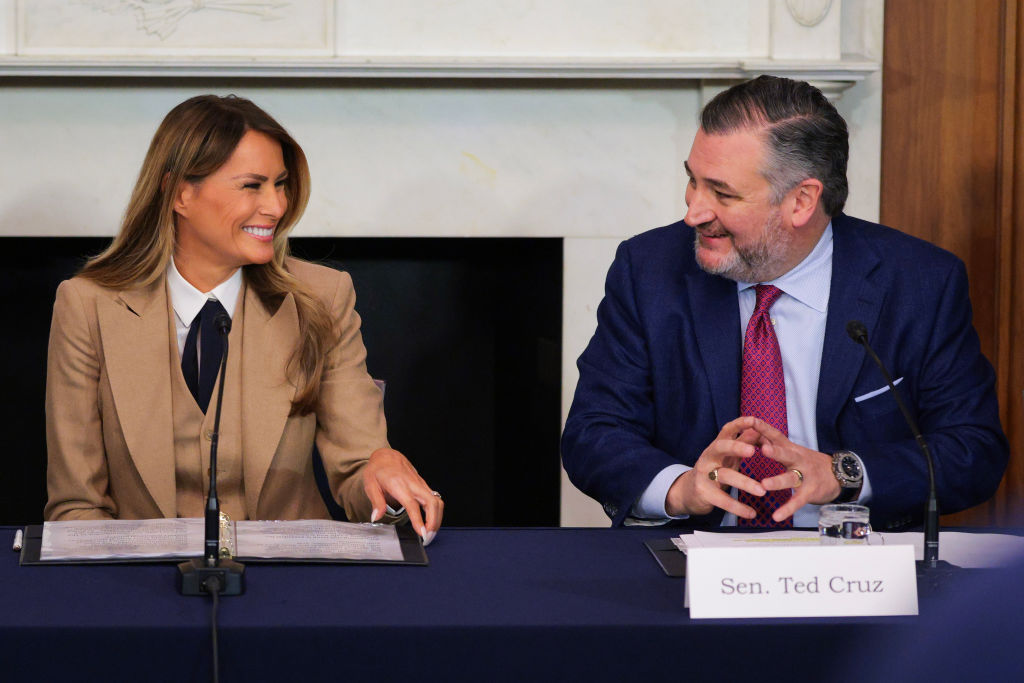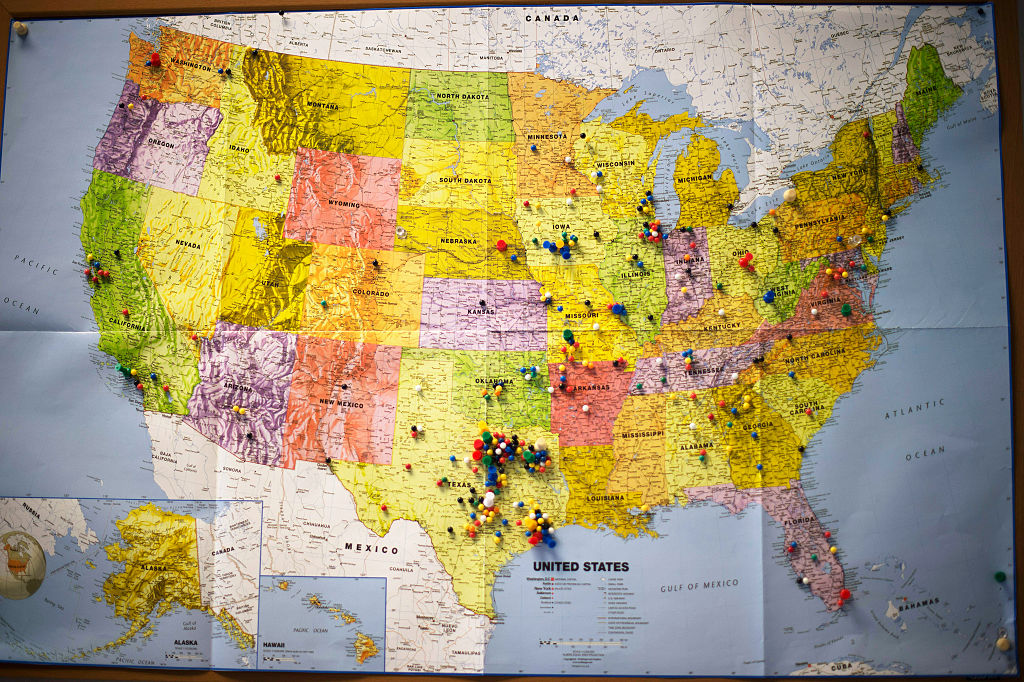It’s 9 a.m. on Sunday morning and my mother and I arrive at her church for Mass. Inside, I greet the mother of one of my oldest friends, ‘Buenos días, Señora, cómo está?’
‘M’hija!’ she exclaims, and we embrace. My Spanish is serviceable, but it gets a real workout when I attend my mother’s church.
At the Catholic church in my Texas Gulf Coast hometown, the Spanish Mass has the largest attendance. Everyone there, except my mother and me, is Hispanic. The altar servers are Hispanic. The middle-aged deacon is Hispanic. The only other exception is the parish priest, Father C., who is from India. An energetic and loving man in his seventies, he has brought a new sense of pageantry to the church, instituted outdoor processions, and installed a large statue of the Virgin of Guadalupe on the front lawn. Every time I visit, his Spanish gets better and better (not surprising given that he already speaks several languages).
There’s always been a significant Hispanic population in this area of Texas, as across most of the region, and I’ve always felt comfortable with it. Before I was 16, I had traveled to Mexico numerous times, become a fan of Mexican food, and attended school with numerous peers who had Hispanic last names. By the time I got to college, I could speak Spanish with some facility, having learned it virtually by osmosis and some self-study. Today, my hometown has a population of around 15,000, 25 per cent of whom are Hispanic. In my mother’s neighborhood, where the streets are named for Texas heroes, one out of every three homes is occupied — and owned — by a Hispanic family.
When I was young, I had been inside this church a few times and I knew it to be the parish of friends who were of various backgrounds: Italian, Polish, Cajun, Mexican. As far as I could tell, my friends knew little if any of the languages spoken by relatives who had come to the US at some point in the past. One of my closest friends is the son of the woman I greeted at church — I’d never heard one word of Spanish from him or his sisters in all our years growing up together. Now, inside this modest and familiar building — an elegant example of midcentury French-inflected vernacular church architecture — I realised that I was the outsider.
The church choir, accompanied by a guitarist, sings folk-style songs from a hymnbook called Flor y Canto. The homily is in Spanish, and the deacon calls for volunteers to participate in training for quinceañeras (a traditional coming-of-age party for Hispanic girls). None of this makes me feel threatened or bereft. It seems surprisingly natural.
On the way to the airport, I hear news reports about the ongoing immigration question: new accounts of violence among detainees, children separated from their families, the dilemma of the Dreamers, The Wall. The soundbites from the talking heads and the politicos contain a lot of airy rhetoric and emotional manipulation, but very few truly useful ideas. The predominant sentiment seems to be cynicism.
Meanwhile, in small towns like mine, things are working differently, as they have for years. The immigrants who have come to the Gulf Coast — a region with a long, colourful history of newcomers from Europe and the Americas — are not, for the most part, transient remittance workers. They are decent, frugal, God-fearing, entrepreneurial family people. They want their children to go to American schools and learn to speak English. They are what used to be regarded as ideal Americans.
The left-leaning right thinkers among us have it wrong when they insist that assimilation is a dirty word. It is violent and coercive, they say. In the unenlightened past, of course, assimilation was a very different thing — inevitable, reasonable, desirable — if one wanted to flourish. Today, we have the distinctly awkward situation that Peggy Noonan described so presciently in 2006: ‘We are not assimilating our immigrants patriotically now. We are assimilating them culturally.’ But how does a culture pass on core values yet manage avoid inculcating love of country?
In my hometown, I see people who have become a part of the mainstream, not fully integrated just yet — that’ll come with subsequent generations — but entering into the life of the community around them. I’m not naive enough to assume their lives are without conflict or alienation. It is well known that poverty and domestic violence are common among immigrant populations. But from what I’ve observed, my mother’s neighbours have seen the future, and it works.
The future for Texas Republicans might, however, not be so congenial. This fall’s senate race pits incumbent Ted Cruz against Beto ‘Act Blue’ O’Rourke. Cruz has long had a problem with likeability — painfully obvious during the 2016 presidential campaign as well as in this contest. O’Rourke, with his toothy smile and tousled hair, still has the mien of a congenial frat boy. Hispanic voters might not be swayed by personal appearance, but they will pay attention to which candidate aligns himself with President Trump and the immigration ‘monstrosity.’
Texas governors have been Republican for 18 straight years, and Texas’s senators have been Republican for 19 straight years. O’Rourke might not unseat Cruz in this cycle, but it is likely he or another Democrat will do so next time around. It seems a safe bet to say that many years of political capital are about to be squandered and a significant voting bloc lost.
In my hometown, I saw Beto campaign signs in front of several houses which I know to be owned by native-born citizens, not immigrants. Of Cruz signs, I saw none. I know nothing about how these immigrants will vote — if, that is, they lawfully can, or if they are even interested in voting. But I do know that their children will vote in the next 10 or 15 years. And given the increasing presence of technology in their lives, it is reasonable to assume that they will follow the lead of the progressive media.
Leann Davis Alspaugh is managing editor of The Hedgehog Review.

























